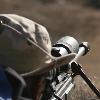possum
Member
say i have a rifle .308 zeroed at 100yds.
also say that i want to shoot at a target at 200yds with a 100yd zero and the bullet is gonna drop 2" (just to keep it simple)
that would be 2 moa right?
also say that my scope has 1/4moa adjustments.
now say that i want to adjust the scope. i would have to do 16 clicks right?
4 turns equals an inch at 100yds, 8 turns would equal 1 inch a 200yds, so therefore i would need 16 clicks to give me 2" at 200yds?
i have been at this all day looking and trying to figure this stuff out, about come ups and trying to learn the mil dot system to no avail.
i know you guys will square me away! thanks


